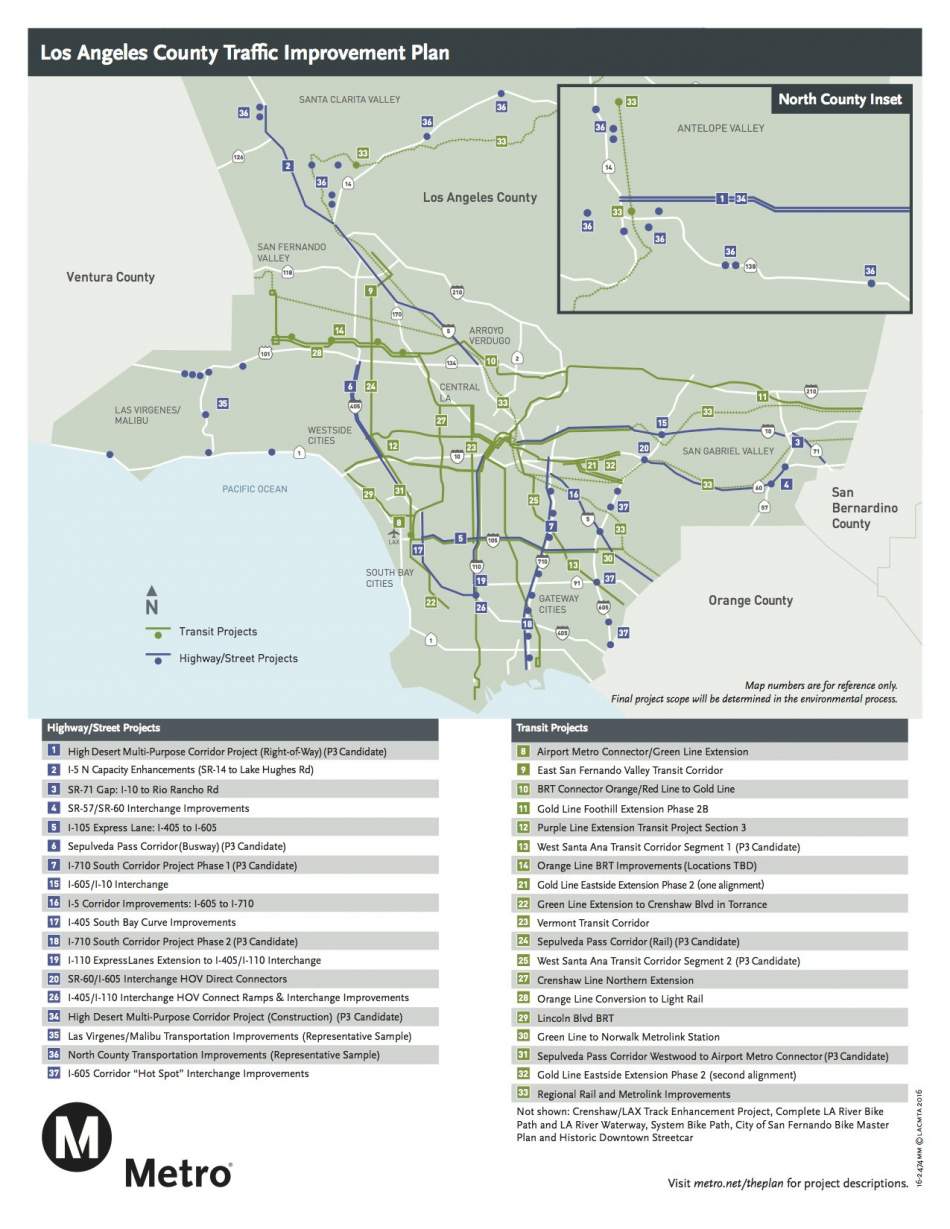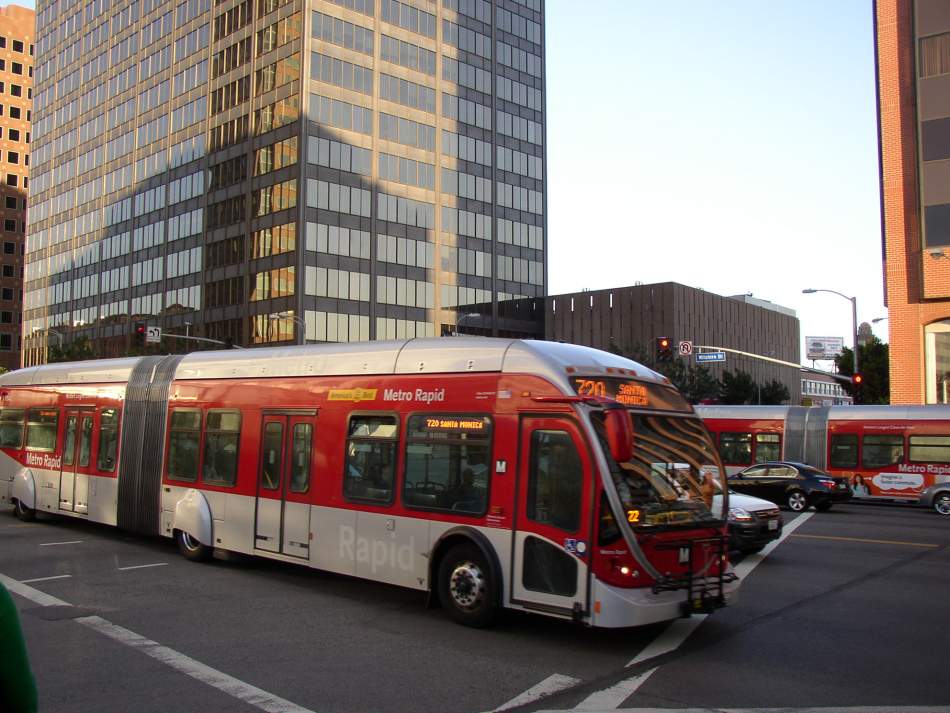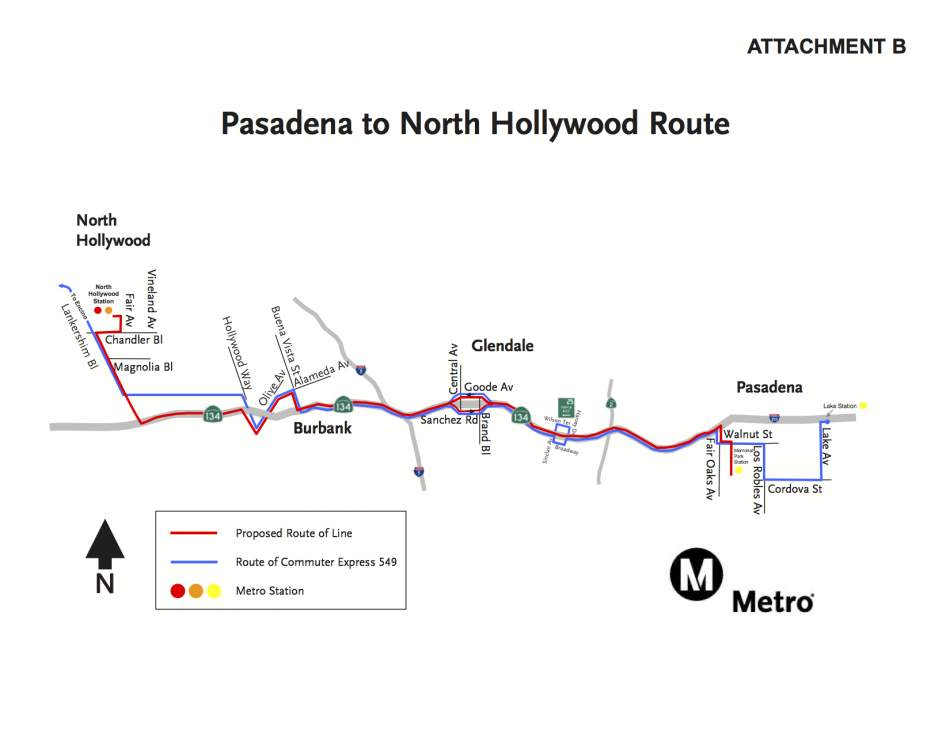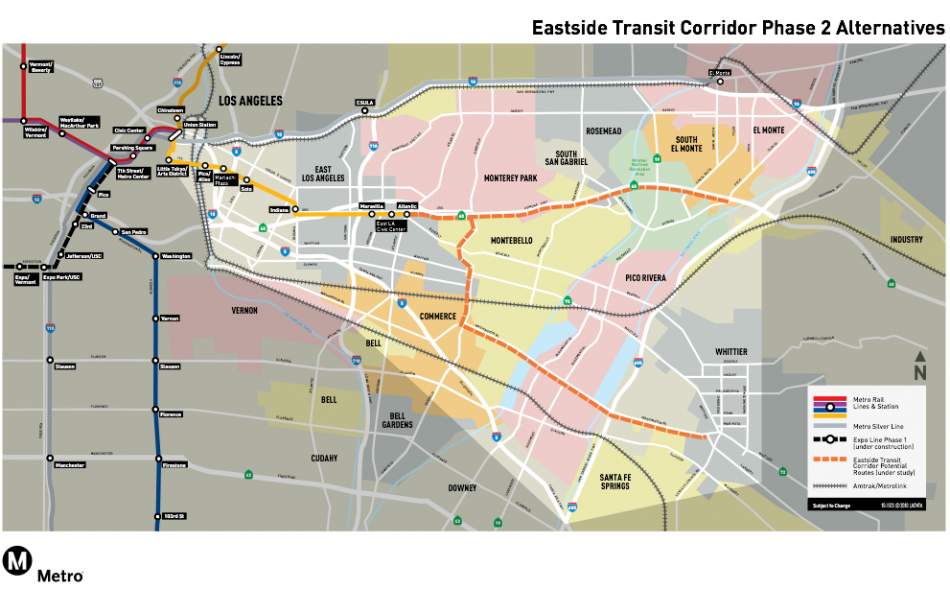After three months of spirited discussion, the Los Angeles County Metropolitan Transportation Authority (Metro) has released a revised expenditure plan for a proposed sales tax ballot initiative which could go before voters this coming November.
The potential ballot measure, now called the Los Angeles County Traffic Improvement Plan, would ask voters to impose a new half-cent sales tax for Los Angeles County and continue the existing Measure R half-cent sales tax indefinitely. The draft expenditure plan, released in March, had called for a sales tax over the course of 40 years. Extending the tax in perpetuity would allow Metro to accelerate the timeline of certain projects, build more transit lines as rail, increase the amount of return to local cities and increase the overall number of projects.
Under the revised expenditure plan, the following transit projects have been accelerated or otherwise altered:
Airport Metro Connector - 96th Street Station
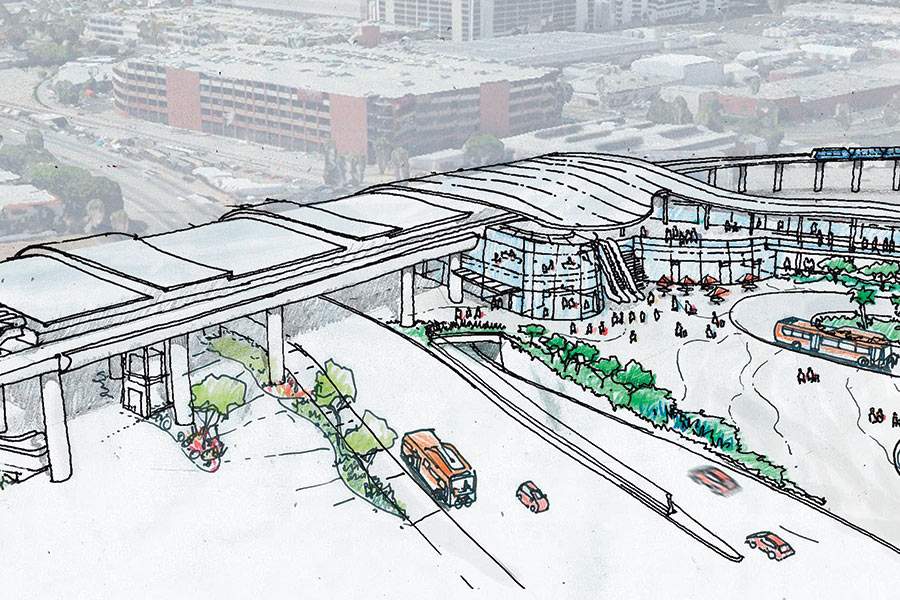
Per the proposed ballot initiative, the long-awaited rail link to Los Angeles International Airport would be placed on accelerated timeline, with construction expected to begin in 2018 and finish by 2021. Under the earlier draft expenditure plan, completion of the new train station was scheduled to occur in 2024.
Plans call for the construction of a new 96th Street Station on the Crenshaw/LAX Line which would connect to an automated people mover and a ground transportation hub.
Orange Line BRT Improvements
The potential ballot initiative now calls for the $286-million upgrade of the Orange Line busway to begin work in 2019 and finish by 2025. Under the draft expnditure plan, improvements would have begun in 2024 and finished in 2028.
The project would implement grade separations at key intersections along the route, improving safety and travel times for the busway's nearly 30,000 daily passengers.
West Santa Ana Transit Corridor
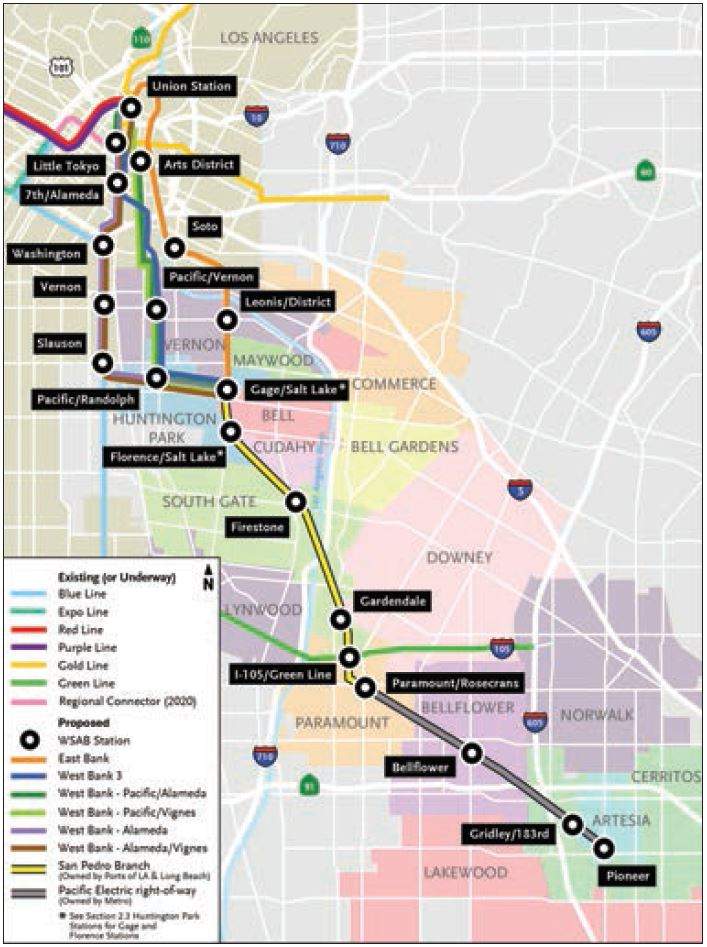
Elected officials in southeast Los Angeles County were vocally critical of the draft ballot initiative, which had called for construction of the 20-mile West Santa Ana light rail line to occur in two phases between 2023 and 2047.
Under the revised expenditure plan, the first phase of the project - a 9.8-mile segment between the Green Line and the City of Artesia - would be accelerated one year, with groundbreaking to occur in 2022 and completion in 2028. The second phase - running between the Green Line and Union Station in Downtown Los Angeles - would be accelerated six years, with construction beginning in 2032 and finishing in 2041.
The project would carry an estimated 60,000 to 75,000 daily passengers by the year 2040. Budget estimates have fallen between $3 billion and $4.5 billion.
Crenshaw/LAX Line - Northern Extension
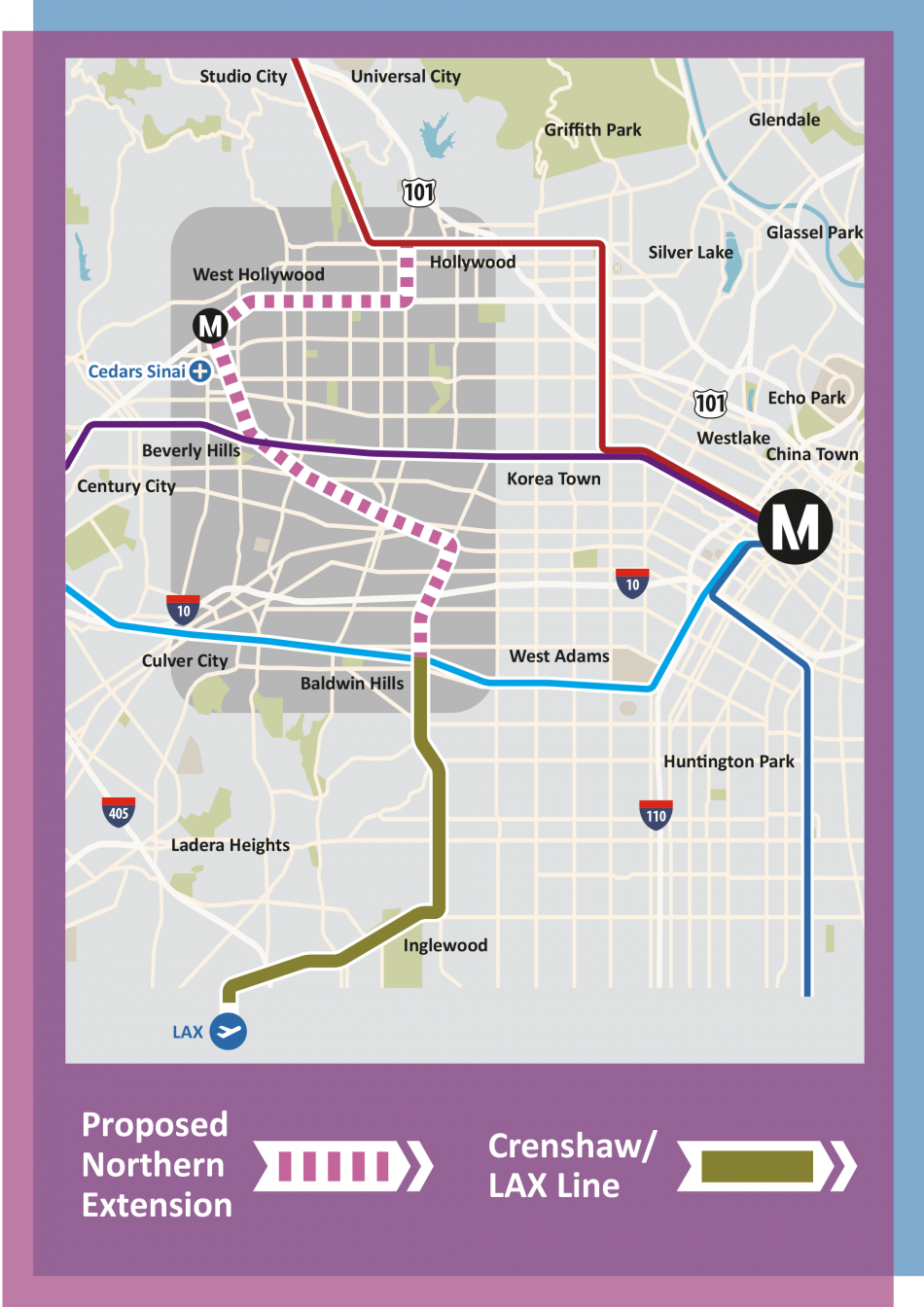
The draft expenditure plan allocated approximately $1.7 billion for a northern extension of the Crenshaw/LAX Line through the Mid-City area to Hollywood/Highland Station, with construction scheduled to begin in 2049 and finish in 2055.
After weighing feedback from stakeholders, the revised expenditure plan has accelerated the project by eight years, with construction scheduled to begin in 2041 and finish by 2047.
The City of West Hollywood has aggressively pushed for a route which would traverse Santa Monica Boulevard. The routes under consideration would range from six-to-nine miles in distance.
South Bay Green Line Extension
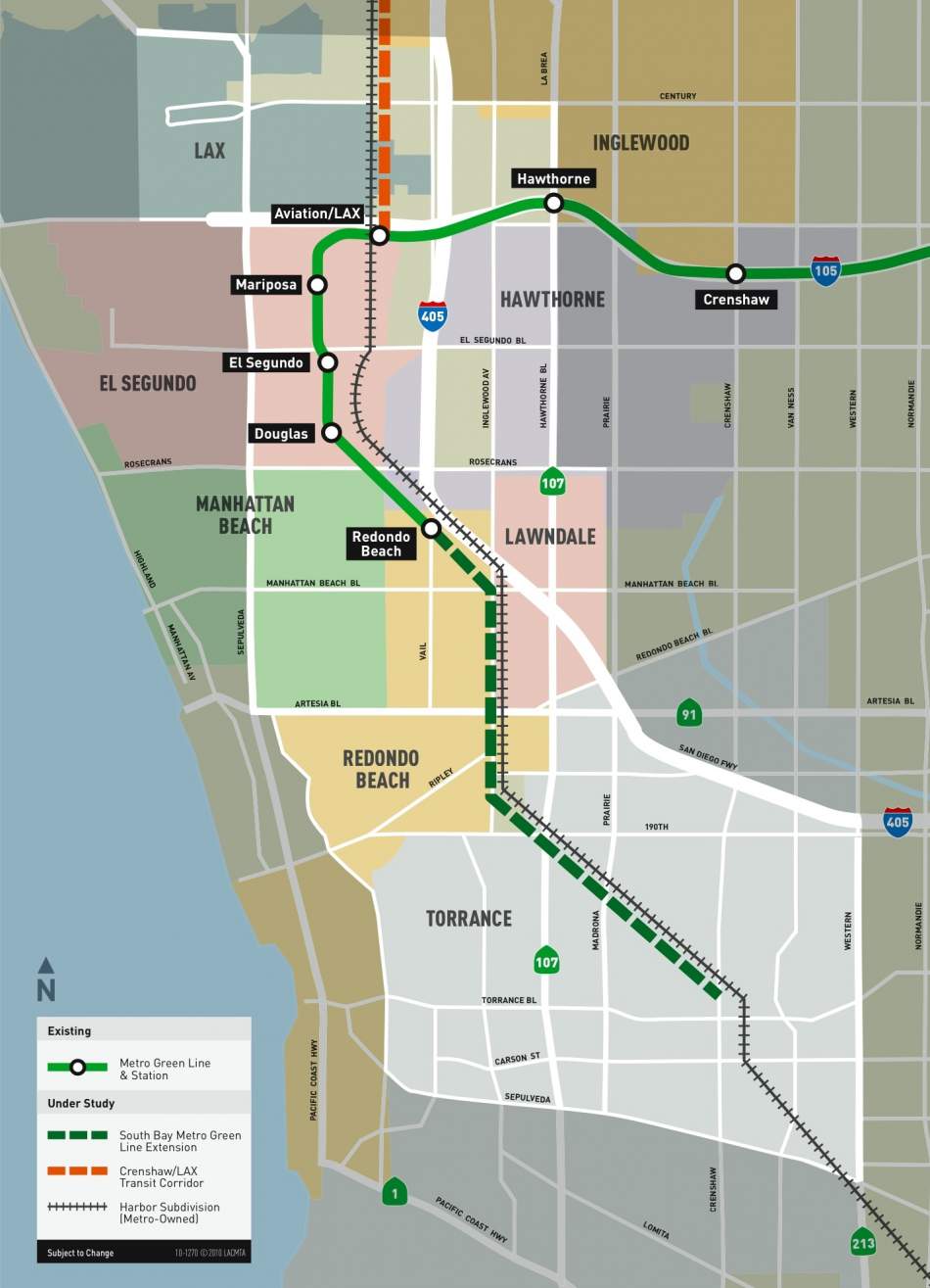
The draft expenditure plan called for Metro to extend the Green Line along the Harbor Subdivision from its current Redondo Beach terminus to the upcoming Torrance Transit Center on Crenshaw Boulevard. The 4.8-mile extension would include four new stations at an estimated cost of $891 million.
Under the revised expenditure plan, the South Bay Green Line Extension would be accelerated by five years, with construction scheduled to occur between 2026 and 2030.
Some elected officials have floated the possibility of an alternate alignment for the project which would serve the new $2.66-billion Inglewood stadium and its adjacent commercial development.
Green Line - Norwalk Extension
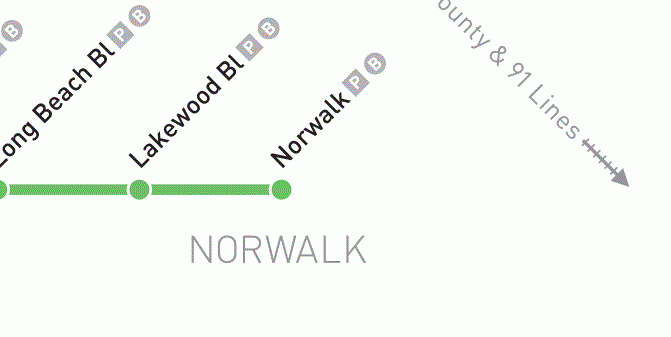
At the opposite end of the Green Line, the potential ballot initiative calls for Metro to spend $770 million to extend light rail service east to the Norwalk/Santa Fe Springs Metrolink Station. The revised expenditure plan accelerates the project's timeline by five years, with construction now scheduled to occur between 2046 and 2052.
The approximately 2.8-mile gap has been described as one of the most frustrating deficiencies in the Metro Rail network.
Lincoln Boulevard Transit Corridor
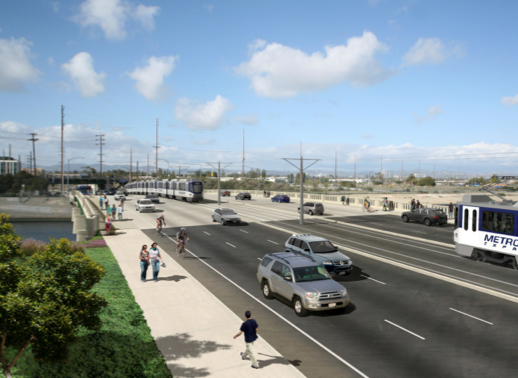
Metro's draft ballot initiative proposed the creation of an 8.8-mile bus rapid transit line along Lincoln Boulevard between Los Angeles International Airport and the Expo Line's Downtown Santa Monica Station.
The revised expenditure plan would accelerate the construction of the transit line, with construction slated to begin in 2043 and finish by 2047. Additionally, the extended sales tax would allow for the project to potentially be built as light rail, albeit with construction delayed until after 2060.
Vermont Transit Corridor
Under the draft expenditure plan, the Vermont Transit corridor was described as a $425-million, 12.5-mile bus rapid transit line running from Hollywood Boulevard to 120th Street in West Athens.
The revised ballot initiative would allow the project to be built as a a heavy rail subway, likely running between the Green Line and the Wilshire/Vermont Station served by the Red and Purple Lines.
Although the draft ballot proposal had called for construction to occur between 2024 and 2028, the revised plan sets a construction date after the year 2060.
North Hollywood - Pasadena Transit Corridor
The revised expenditure plan would allow for the proposed North Hollyowood-to-Pasadena bus rapid transit line to instead be constructed as light rail. The route would also serve the cities of Glendale and Burbank.
Gold Line Eastside Extension Phase II
The revised expenditure plan would provide sufficient funding to build two separate extensions of the Eastside Gold Line. One alignment would run towards South El Monte on elevated structures parallel to the 60 Freeway, while a second branch would follow a meandering path along underground, at-grade and elevated tracks to the City of Whittier.
Approximately 30,000 passengers would be expected to use the two extensions by the year 2030. The cost of a single alignment was previously estimated at $3 billion.
Local Return and Regional Rail
Additionally, the amount of money returned to cities and unincorporated areas has been increased from 16% to 17% from 2018 until 2040, after which point the amount would be increased to 20%. The amount of funding received by the Metrolink commuter rail system would also increase by 1% after 2040.
The following projects remain on the same timeline put forth in the draft expenditure plan:
- Purple Line Extension, Phase III: a $1-billion extension of the Purple Line running 2.5 miles from Century City to the Westwood Veterans Administration Campus. Completion is scheduled to occur in 2024.
- Gold Line Foothill Extension, Phase II: a $1.1-billion, 11-mile extension of the Gold Line east from Azusa to the Claremont Metrolink Station. Construction is scheduled to occur between 2019 and 2025.
- East San Fernando Valley Transit Corridor: A $1.3-billion transit line running 9.2 miles between the Sylmar Metrolink Station and the Van Nuys Orange Line Station. The project, which could be built as light rail or bus rapid transit, is expected to open in 2027.
- Sepulveda Pass Transit Corridor: A 21-mile toll and freeway tunnel running between the Van Nuys Metrolink Station and Los Angeles International Airport. The project, budgeted at more than $6 billion, would open in two phases in 2033 and 2057.
- Orange Line Conversion to Light Rail: The $1.4-billion project would convert the 14.5-mile section of the busway between Warner Center and North Hollywood into light rail. Completion is expected in 2057.
- Historic Downtown Streetcar: The 3.8-mile steetcar loop would travel through a number of Downtown neighborhoods. Although operations are currently scheduled to commence in 2020, the ballot measure does not provide funding for the project until 2053.
The Metro Board of Directors is scheduled to consider placing the Los Angeles County Traffic Improvement Plan on the November ballot at its next meeting on June 23.
- Exploring Measure R2... (Urbanize LA)
- Revised spending plan for potential ballot measure... (Metro)





